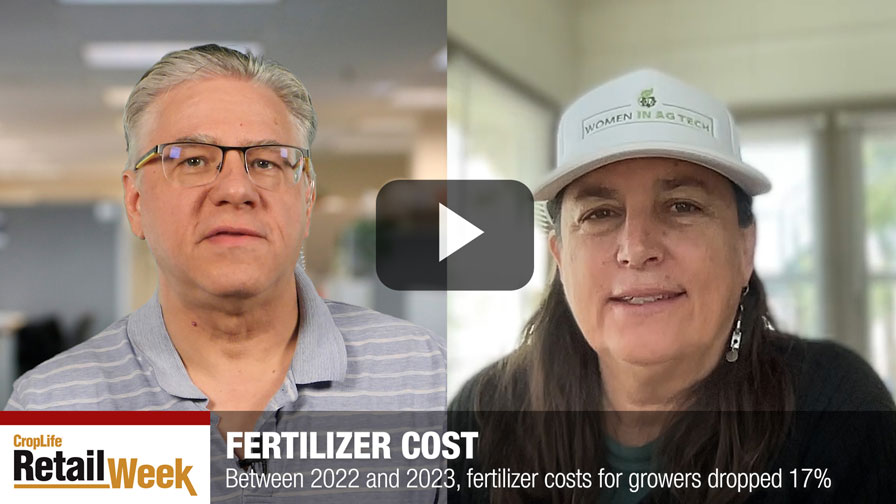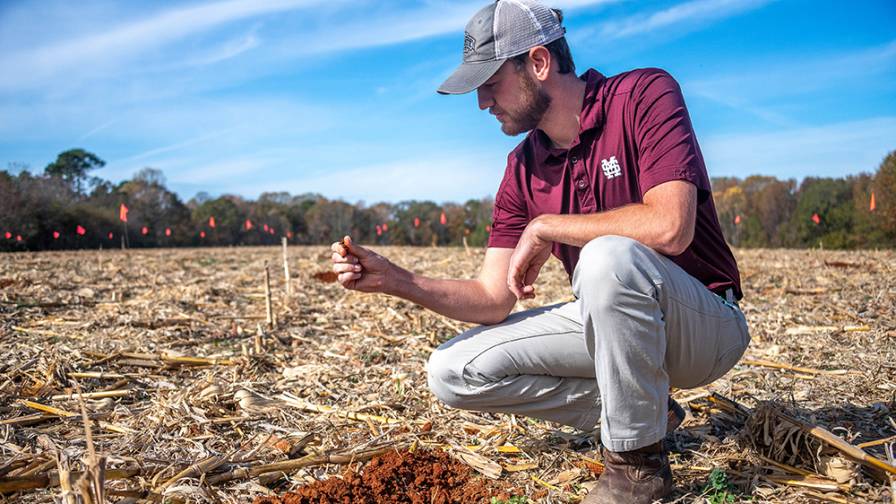5 Economic Considerations For Optimal Fertilizer Efficiency
Changes in crop prices often generate questions about the economics of fertilization. Prices for many crops, particularly corn, have recently fallen considerably from the highs of the past few years. This shift has some asking questions such as “should I reduce fertilizer rates in response to lower prices?” A detailed answer for a specific situation will depend on several factors, but a review of some fundamental principles can give us a foundation for addressing such questions.
There are four primary factors affecting profitability:
- Crop price.
- Production costs.
- Yield level.
- Crop quality (as it affects price).
Now, which of these factors does the grower have significant control over? Typically, producers are price takers and thus have little control over prices. However, they do have control over variable costs, which directly impact yield and quality. Thus, in this sense yield level is a controllable factor determining profit. Once a decision has been made to plant a certain crop, then it becomes a simple matter of making the most of the opportunity. This requires planning a program designed to optimize efficiency and produce maximum returns per acre — in other words, to produce yields that maximize profit while exercising responsible environmental stewardship.
Factors To Consider
There are several factors to consider at this point. These include the following:
1. Greater profits come from higher yields (to a point) since costs are spread over more production units (bushels, bales, pounds, etc.) resulting in lower cost per unit of production. Efficient and profitable production involves lowering unit cost to a point of maximum net return. This Maximum Economic Yield (MEY) concept was popular decades ago, and is as valid and legitimate today as it was then.
2. Crop and fertilizer prices have relatively little effect on optimum levels of fertilization. This is because in determining profitability yield level has an overshadowing effect on crop and fertilizer price. Economists at Kansas State University (KSU) have published an online Excel tool that helps demonstrate the impact of crop and fertilizer prices on estimated economic optimum rates of both nitrogen (N) and phosphorus (P) application. For irrigated corn with yield goal set at 250 bushels per acre, N and P2O5 prices set at 50 cents per pound, and all other settings left at default, when crop price was varied from $7 to $3.50 the estimated optimum N rate went from 340 pounds of N to 308 pounds of N per acre — a decline of 32 pounds of N with a halving of corn price.
For P, the rate dropped from 34 pounds to 27 pounds P2O5 per acre — a decline of only 7 pounds. This example is meant solely for illustrating that while shifts in crop prices do have an impact on optimal rates of application, that impact may not be nearly as great as one would first expect. Therefore, the tendency to react to crop price declines by deeply cutting inputs should be closely scrutinized.
3. Viewing corn as a form of currency is a useful exercise to illustrate the impact of market swings. The first table compares fertilizer prices in November 2012 to November 2013 as dollars per ton of product and dollars per pound of nutrient. The second table uses these fertilizer costs plus corn prices to determine the amount of fertilizer a bushel of corn would buy and also what the cost, in bushels, was for 100 pounds of each of the nutrients. The analysis shows that cost of 100 pounds of nutrient was 6 to 8 bushels in 2012 and 9 to 12 bushels in 2013. It took more bushels to buy fertilizer in 2013, but not much more relative to the full value of the crop. The analysis further shows that under current market conditions, N, P and potassium (K) remain good investments when a yield response is expected.
4. Adequate and balanced fertility may also produce non-yield profit affecting benefits. For example, in a KSU irrigated corn study (Dhuyvetter and Schlegel, 1994), P fertilizer hastened maturity, lowered grain moisture at harvest and resulted in greater profit due to lower drying cost. This work showed that P fertilizer reduced drying costs by an average of 10 cents per bushel.
5. Growers and their advisers are more than ever operating in a fluid global environment. Adaptation to massive swings and changes is necessary for survival; however, even in the face of change certain principles endure. One of these is the MEY principle discussed above, another is the principle of 4R Nutrient Stewardship. This column has discussed the effect of crop price on estimated optimum fertilizer rate. But none of the 4Rs (fertilizer rate, source, time and place) stands alone; all are interconnected, each affecting the other. A MEY program requires not only the right rate, but also source, time and place factors that collectively assure efficient and effective nutrient use.
So encourage growers to take a breath, “do the numbers” and apply sound agronomic and economic principles before reacting to recent market swings.






